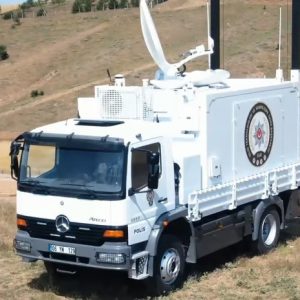NASA, at the forefront of this endeavour, continually pushes the boundaries of what’s possible. In a groundbreaking move, NASA is poised to demonstrate its Autonomous Navigation System on the lunar surface. This system represents a pivotal leap forward in space exploration technology, promising to revolutionize how we navigate and explore celestial bodies.

Unveiling the Autonomous Navigation System
At the heart of NASA’s latest venture is the Autonomous Navigation System, a sophisticated framework designed to empower spacecraft with unprecedented levels of autonomy. Gone are the days of heavy reliance on ground-based commands; instead, spacecraft equipped with this cutting-edge system will possess the ability to navigate and make crucial decisions independently. This marks a significant departure from traditional methods, where real-time guidance from Earth was indispensable.
How Does it Work?
The Autonomous Navigation System leverages a combination of state-of-the-art sensors, advanced algorithms, and machine learning capabilities. These components work in tandem to enable spacecraft to perceive and interpret their surroundings with remarkable accuracy. Through a process akin to human cognition, the system processes sensory data in real-time, allowing spacecraft to autonomously plot their course, avoid obstacles, and adapt to dynamic environments.
Advantages Over Traditional Navigation Methods
The transition to autonomous navigation represents a paradigm shift in space exploration for several reasons:
1. Enhanced Efficiency and Flexibility
By reducing reliance on ground-based commands, the Autonomous Navigation System streamlines mission operations and minimizes communication delays. This increased efficiency translates to greater flexibility in mission planning and execution, as spacecraft can react swiftly to unforeseen circumstances without constant input from mission control.
2. Mitigation of Communication Constraints
In traditional navigation systems, communication constraints pose significant challenges, particularly during missions to distant celestial bodies like the Moon. The Autonomous Navigation System mitigates these constraints by enabling spacecraft to navigate autonomously, even when direct communication with Earth is limited or disrupted.
3. Improved Safety and Reliability
Autonomous navigation enhances mission safety by reducing the risk of human error and enabling spacecraft to navigate around potential hazards autonomously. Moreover, the system’s ability to adapt to changing conditions ensures mission reliability, even in the face of unexpected challenges.
Applications and Implications
The implications of NASA’s Autonomous Navigation System extend far beyond lunar exploration. This groundbreaking technology has the potential to revolutionize space exploration across various fronts:
1. Future Lunar Missions
The successful demonstration of autonomous navigation on the Moon lays the groundwork for future lunar missions, paving the way for sustained human presence and scientific exploration. Autonomous spacecraft can scout and map lunar terrain, identify suitable landing sites, and assist in resource prospecting, laying the foundation for future endeavors.
2. Deep Space Exploration
Beyond the Moon, autonomous navigation holds immense promise for deep space exploration. Spacecraft equipped with this technology can navigate vast distances with minimal human intervention, enabling ambitious missions to distant planets, asteroids, and beyond.
3. Robotic Missions
Autonomous navigation is not limited to crewed missions; it also enhances the capabilities of robotic spacecraft. Robotic explorers equipped with this technology can autonomously traverse challenging terrain, conduct scientific research, and even collaborate with human astronauts, amplifying our reach and capabilities in space.
Collaborative Efforts and Future Prospects
The development and implementation of the Autonomous Navigation System are the result of collaborative efforts between NASA, industry partners, and academic institutions. This spirit of collaboration underscores the collective commitment to advancing space exploration and pushing the boundaries of human knowledge.
Looking ahead, the future prospects for autonomous navigation are exceptionally bright. As technology continues to evolve, we can expect further refinements and enhancements to the Autonomous Navigation System, unlocking new possibilities and ushering in a new era of space exploration.
In conclusion, NASA’s demonstration of autonomous navigation on the Moon represents a significant milestone in our quest to explore and understand the cosmos. By embracing innovation and pushing the limits of technology, we are charting a course towards a future where the wonders of the universe are within our reach as never before.











